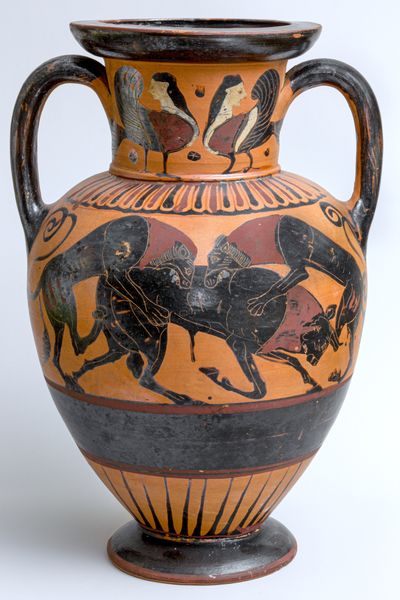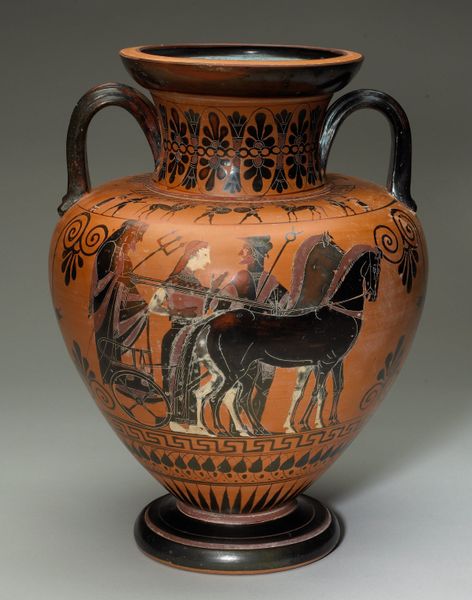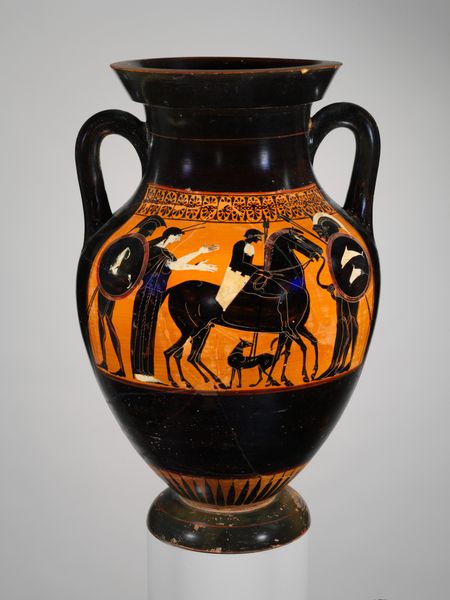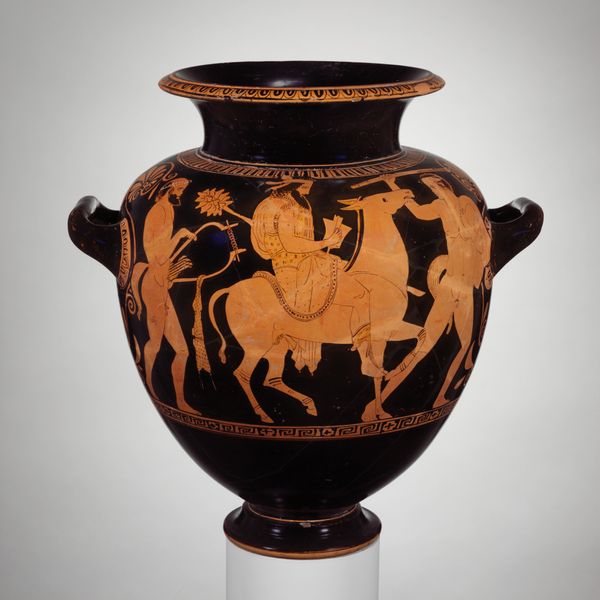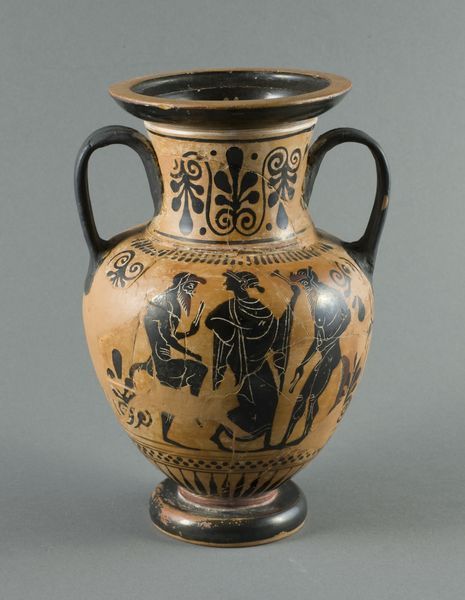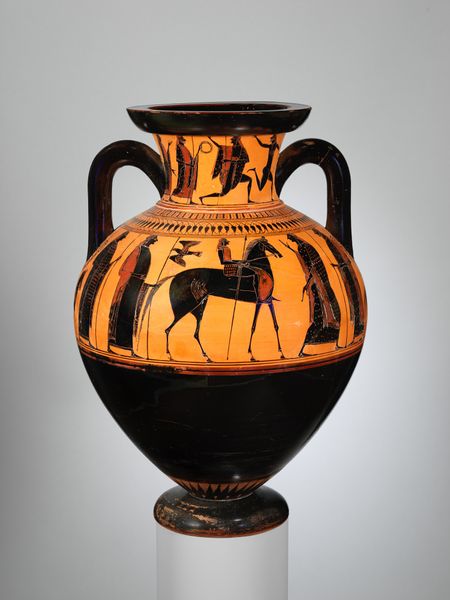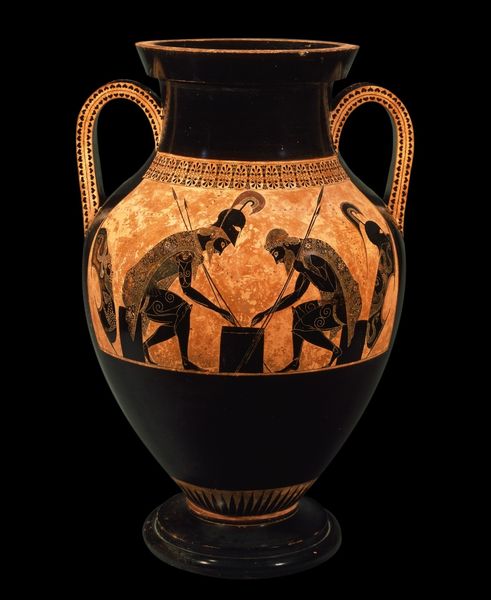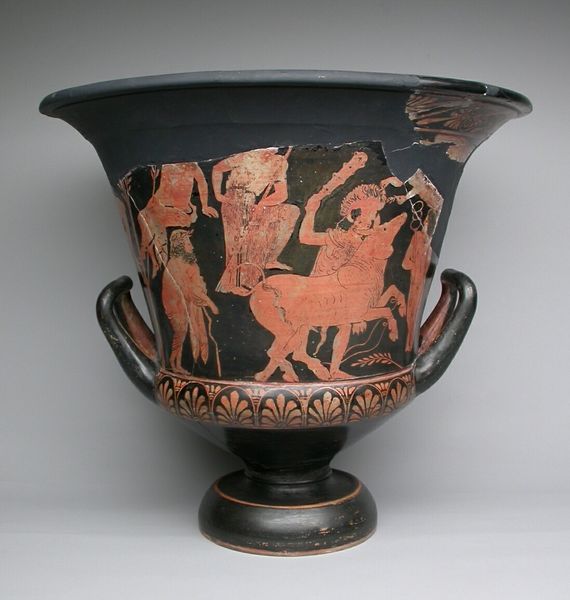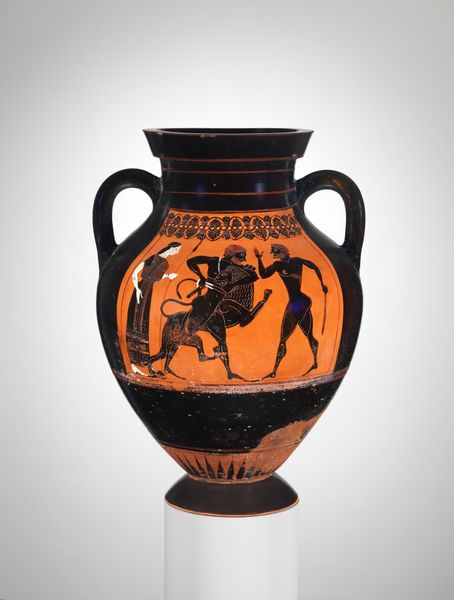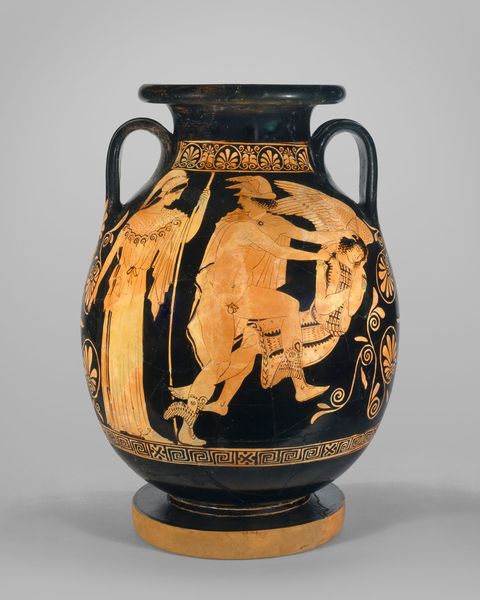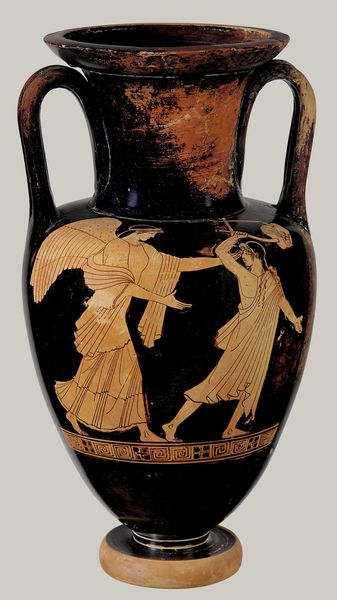
drawing, ceramic
#
drawing
#
animal
#
greek-and-roman-art
#
landscape
#
ceramic
#
vase
#
figuration
#
ancient-mediterranean
#
ceramic
#
genre-painting
Dimensions: 9 1/2 × 6 5/8 in. (24.1 × 16.8 cm) Diam. of rim: 6 1/8 in. (15.5 cm) Diam. of foot: 4 5/16 in. (11 cm)
Copyright: Public Domain
Curator: What immediately strikes me about this ceramic Pelike from 425 BC, currently housed in the Metropolitan Museum of Art, is the stark contrast. The black background really makes the reddish figures pop. Editor: Yes, it’s instantly visually engaging! You can practically feel the smooth, cool surface of the ceramic in your hands. And notice how the drawing is both precise and stylized; what scene is unfolding for us? Curator: The piece features a figured scene, a genre painting typical of the period, portraying what appears to be a winged figure with big cats and a woman. Looking closely at the possible allegorical interpretations suggests ritual. The question arises, though, for whom was this vessel made? Who would be consuming from it, quite literally engaging with this story? Editor: Exactly! This Pelike's not just beautiful, it's also utilitarian. What was being transported in this ceramic vessel? Who were the craftspeople involved? What was their labor like? These vases weren’t casually thrown together, were they? The evenness, the way it retains its color after all this time! Curator: Absolutely. Understanding the craftsmanship adds another layer of appreciation. I am compelled to view the positionality of the women involved both as part of the scene illustrated, but also its place and function, its reception, and what it symbolizes to those viewing it then, and to us viewing it now. Does the vessel normalize the winged figure’s encounter with the woman in a particular patriarchal, socio-cultural context? Editor: A definite tension exists in the way it might reflect or reinforce certain values of its time. But, from a material standpoint, the quality of the ceramic also suggests trade and exchange, perhaps reflecting larger economic systems. Curator: It makes me wonder about how we read ancient narratives through a contemporary lens, the responsibilities, as it were, as we encounter cultural artifacts of this kind. I notice that these pieces often depict encounters or clashes of bodies. What are the possible racial implications? Editor: Interesting! Perhaps, for me, this encounter emphasizes more how craft objects mediate relationships across time, connecting us to ancient artisans. That link to lived experience remains. Curator: Ultimately, appreciating this Pelike involves understanding its historical significance and material production. This approach, when combined with our responsibility for analysis, allows a richer understanding. Editor: Right. Understanding art as not simply aesthetics, but as a product of material processes, expands our appreciation for cultural making, and what we take from it today.
Comments
No comments
Be the first to comment and join the conversation on the ultimate creative platform.
